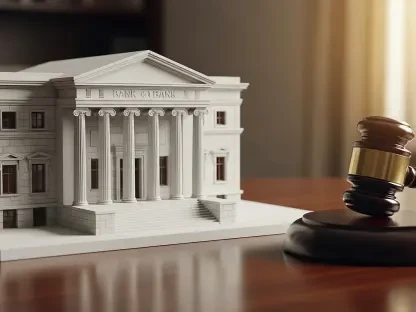The Rise of Stablecoins in Global Finance
Stablecoins, as digital assets tied to traditional currencies like the U.S. dollar, have emerged as a cornerstone of modern finance, promising stability in an otherwise volatile cryptocurrency market. Their design aims to mirror the value of fiat money, offering a reliable medium of exchange in a digital realm. This unique positioning has propelled their adoption across various financial sectors, from individual users to large institutions, seeking alternatives to conventional banking systems.
The significance of stablecoins lies in their ability to enhance financial efficiency by slashing transaction costs and speeding up cross-border payments. Unlike traditional methods that often involve intermediaries and delays, stablecoins leverage blockchain technology to enable near-instant transfers at a fraction of the cost. This capability is particularly transformative for global remittances and trade, where speed and affordability are critical.
Key market players are driving this momentum, with companies like PayPal introducing their dollar-backed PYUSD, and Visa exploring blockchain solutions for cost-effective payments. Major banks such as JPMorgan and BNY Mellon are also integrating stablecoins for tokenized settlements, while blockchain technology serves as the backbone of these innovations. However, the regulatory landscape remains fragmented, with inconsistent policies across jurisdictions slowing broader adoption and creating uncertainty for stakeholders.
Stablecoins as a Game-Changer in Payments
Driving Efficiency and Accessibility
Stablecoins are revolutionizing payment systems by providing faster and more affordable transactions, particularly in regions underserved by traditional banking. Their ability to operate on decentralized networks eliminates the need for multiple intermediaries, reducing both time and expense. This efficiency is a lifeline for communities in remote or economically unstable areas where access to reliable financial services is limited.
Real-world applications underscore this potential, especially in Latin America. In Argentina, stablecoins like USDT are widely used to hedge against rampant currency devaluation, while Brazil has classified these digital assets as formal tools for remittances. Such use cases demonstrate how stablecoins serve as practical solutions for economic challenges, offering stability and access where local currencies falter.
Federal Reserve officials have taken note of this transformative power, with Governor Christopher Waller labeling stablecoins as intriguing new payment tools. He argues that they foster competition and modernization within financial systems, particularly as synthetic dollars on blockchain platforms. This perspective signals a growing acceptance among policymakers of stablecoins’ role in reshaping payment infrastructures.
Market Adoption and Growth Trends
The integration of stablecoins into mainstream finance is gaining traction, with major financial and tech entities leading the charge. Platforms like Venmo and Cash App, backed by PayPal’s PYUSD, are facilitating low-cost transactions, while Visa experiments with blockchain to streamline cross-border payments. Additionally, banks like JPMorgan are using stablecoins for 24/7 tokenized settlements, minimizing risks in currency trading.
Data reveals the scale of adoption, particularly in volatile markets, with over 60% of crypto users in Argentina relying on stablecoins for financial security. Legislative advancements, such as the GENIUS Act, have further fueled industry momentum by providing legal clarity, encouraging more institutions to explore stablecoin applications. This shift reflects a broader trend of stablecoins becoming practical financial tools rather than speculative assets.
Looking ahead, stablecoin adoption appears poised for continued growth as businesses and consumers recognize their utility beyond crypto trading. Their potential to serve as a bridge between digital and traditional finance is becoming clearer, especially in markets hungry for innovative payment solutions. This trajectory suggests a future where stablecoins could become a staple in everyday transactions.
Challenges in Stablecoin Integration
Despite their promise, stablecoins face significant hurdles in achieving widespread integration. Price volatility, even in assets designed for stability, remains a risk due to potential mismatches in asset backing or market dynamics. Additionally, the absence of uniform standards across platforms raises concerns about reliability and consumer protection, deterring cautious adopters.
Market-driven challenges also loom large, particularly around building user trust. Transparency in how stablecoins are backed—whether by cash reserves or other assets—is critical to reassuring users of their value. Without clear disclosure and consistent practices, skepticism persists, hampering broader acceptance among both individuals and institutions.
Technological barriers further complicate the landscape, with blockchain scalability and security posing ongoing issues. Ensuring that underlying systems can handle mass adoption without compromising speed or safety is a pressing concern. To address these obstacles, industry collaboration, independent audits, and robust technological upgrades are essential strategies to bolster confidence and facilitate seamless integration.
Navigating the Regulatory Maze
The regulatory environment for stablecoins remains a complex puzzle, characterized by delays in establishing cohesive frameworks both in the U.S. and globally. While innovation races ahead, governance struggles to keep pace, creating uncertainty for issuers and users alike. This lag in policy development often leaves market participants navigating a patchwork of rules that vary by region.
In the U.S., efforts to create a unified approach are underway, with a bipartisan cryptocurrency bill targeting completion by 2026. The GENIUS Act also plays a pivotal role by offering legal clarity for stablecoin development, aiming to define oversight roles for agencies like the SEC and CFTC. Yet, progress remains slow, with debates over jurisdiction and scope stalling decisive action.
Internationally, calls for alignment are growing, with the Bank of England advocating for U.S.-U.K. coordination to prevent regulatory gaps. Industry leaders like Circle, a prominent stablecoin issuer, emphasize the need for consistent standards, including full asset backing and transparency. Balancing oversight with innovation is crucial, as excessive regulation could stifle growth, while inadequate rules risk financial instability and user harm.
The Future of Stablecoins in Digital Finance
Stablecoins hold the potential to fundamentally challenge traditional payment systems, reshaping the contours of global finance over the long term. By offering a digital alternative that combines the stability of fiat with the flexibility of blockchain, they could redefine how money moves across borders and sectors. This vision positions them as a cornerstone of a more interconnected financial ecosystem.
Emerging trends point to deeper integration into banking and fintech, with stablecoins likely to play a key role in financially inclusive markets. Their ability to serve unbanked populations and facilitate low-cost transactions aligns with evolving consumer needs and global economic conditions. Technological advancements and regulatory progress will further shape this trajectory, unlocking new possibilities for adoption.
Potential disruptors, such as central bank digital currencies (CBDCs) or novel digital assets, may also influence stablecoins’ future. Rather than outright competition, coexistence seems plausible, with each serving distinct niches in the digital economy. As these dynamics unfold, stablecoins’ adaptability will be tested, but their capacity to innovate suggests a lasting impact on financial systems worldwide.
Conclusion: Balancing Innovation and Oversight
Reflecting on the discourse surrounding stablecoins, it has become evident that they stand as both transformative tools and subjects of significant regulatory scrutiny in the evolving financial landscape. Their capacity to streamline payments and enhance accessibility has garnered robust support from institutions like the Federal Reserve, major banks, and tech leaders, marking a pivotal shift in digital finance.
Yet, the journey reveals persistent challenges, with regulatory delays casting shadows over their full potential. The fragmented governance frameworks have often hindered seamless integration, underscoring the urgency for unified policies to address risks like volatility and consumer protection without curbing innovation.
Moving forward, actionable steps emerge as critical, including accelerating regulatory clarity through international cooperation and fostering industry-driven transparency via audits and standards. These measures promise to harmonize innovation with oversight, ensuring stablecoins can solidify their role in financial evolution while safeguarding user trust and market stability.









